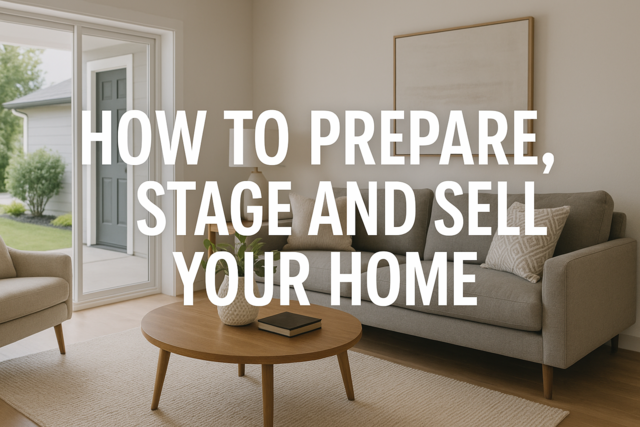Interior designers need to learn about the licensing and certification requirements for their particular states. Also, many interior designers will seek certifications in their areas of specialty.
Article overview:
-
Interior design certifications
-
Specialty certifications
-
Title laws
Interior Design Requirements for Certification
Because interior designers play such a critical role in the development of a structure, it is important that they have formal training in interior design. Many states require that interior designers get certified in interior design to ensure that designers are familiar with the many government restrictions related to interior design.
Designers may obtain certification from a variety of organizations, depending on their areas of specialty, and their certification doesn't have to be limited to general interior design certifications.
In order to obtain many certifications, they not only need to pass an exam, but they may also need to have a certain number of years of experience within the field.
Health and safety are so important to interior design projects that many states only allow individuals who have significant experience and education in design to obtain their certifications. Specifically, the government wants to be sure that the people who are designing and constructing buildings are doing so in accordance with their building codes. . Again, many of the government codes relate to:
-
The Americans With Disabilities Act (ADA) mandates and related accessibility
-
Electricity, plumbing, fire, and other safety restrictions, which are imposed by state and local government agencies. Again, a designer will need to take applicable codes into consideration when determining doors, lighting, equipment, egress space, flooring, table height, and much more. Many spaces will need to be wheelchair accessible.
-
Safe furnishings and materials that will not do harm to the public's health, including certain kinds of woods, paints, and more.
In addition to a general interior design certification, many designers will need to have special certifications.
Likewise, many designers pursue LEED AP certification, which indicates they have the knowledge and skills necessary to design and implement an environmentally friendly project. LEED certification is highly sought-after by clients and firms. Therefore, if you want to improve your marketability as an interior designer, it may be wise to seek LEED certification.
Many interior designers include their certification credentials with their names. For example, an ASID designer might write, "Jane Smith, ASID."
Just like with doctors, lawyers, and others who use professional titles, there are title laws regulating who can use interior design titles. There are dozens of titles interior designers might use, depending on which license or certification they have received, as well as organizations they belong to in the design industry. Some common interior designer titles include:
-
CID � Certified Interior Designer
-
ASID � American Society of Interior Designers
-
LEED � Leadership in Energy and Environmental Design
-
AIA � American Institutes of Architects
-
FIDER � Foundation for Interior Design Education and Research
-
NKBA � National Kitchen and Bath Association
-
NCIDQ � National Council for Interior Design Qualification
-
FASID � Foundation for Advanced Studies on International Development
-
IES � Illuminating Engineering Society
-
NTHP � National Trust for Historic Preservation
-
ISP � Institute of Store Planners
Title Laws Regulating Interior Designers Every state has title laws that regulate interior designers. A title law is a law that regulates how professional titles are used. In order to use the title of interior designer, designers need to meet specific state requirements. These requirements vary by state. A full list of title laws can be found here.
Interior designers will often specialize in a particular industry, or type of design. This article will provide you with an overview of major industries.
Article overview:
-
Corporate
-
Government
-
Healthcare
-
Hospitality
-
Residential
-
Retail
Many interior designers will focus on one particular type of design or industry. Within that industry, the designer needs to be aware of specific factors that will influence the design. These factors may incorporate a wide body of knowledge: human environment needs, design standards, products and materials, interior construction, codes, and regulations, communication standards, and professional practices.
Interior designers should be sure that, no matter what industry they work in, their designs meet health, safety, and welfare standards.
Having an area of specialization can not only make you more marketable, it may be easier to find a job if you plan to work for an interior design firm. Many larger interior design firms will have designers for each of the major industries, so that they can suit a wide range of client needs.
Here is a brief overview of different design industries in which you may work:
Corporate
Corporate design refers to design for the workplace. Corporate design is based on how a space is used, including how many employees will use the space, how employees prefer to use the space, privacy issues within the workplace, creative break-out areas, and more. Employees may have different preferences as well. For example, some employees may work best in quiet environments, while others prefer to have background noise.
Corporate design also relies upon the aesthetic preferences of the client. Some clients want creatively designed workplaces that are innovative, visually stunning, and atypical of a corporate environment. Other employers may prefer a more traditional work space. Your job as an interior designer is to determine what type of look and feel a client wants to have for the space and deliver many options.
Keep in mind that many workplaces today are especially interested in LEED designs. Therefore, even if you are not a LEED designer, you may want to be able to advise your clients on LEED best practices, so they can make sound environmental decisions.
Here are some resources for corporate interior designers from theInternational Interior Design Association (IIDA):
-
IFMA's World Workplace
NeoCon World's Trade Fair
Corporate Design Foundation -
SMPS (The Society for Marketing Professional Services)
-
BOMA (Building Owners and Managers Association)
-
CIDA (Council for Interior Design Accreditation)
-
officeinsight News for those who design and furnish workplaces
One of the primary considerations designers need to keep in mind when designing government facilities is that government facilities need to be accessible to the public. This means they need to comply with all state, federal, and local regulations, including Americans With Disabilities Act (ADA) regulations.
The National Council for Interior Design Qualification (NCIDQ)developed guidelines that interior designers need to meet when designing public spaces. These guidelines relate to every element of interior design, including wheelchair-accessible bathrooms and fire-rated doors. You can find more information about these guidelines through the organization's Health, Safety and Welfare (HSW) Tour.
Government facilities do not just encompass government offices, they may also encompass:
-
Administrative Buildings
-
Cafeterias/Dining Halls
-
Courtrooms
-
Correctional Facilities
-
Dormitories and Military Base Lodging
-
Family Service Centers
-
Libraries
-
Museums
-
Officer's Clubs
-
Office Buildings and Campus Locations
-
Schools and Universities
[source]
Here are some resources for government facility interior designers from the International Interior Design Association (IIDA):
Also, take a look at the U.S. Green Building Council resources for government buildings, including its publication, Roadmap to Sustainable Government Buildings.
Healthcare
Additionally, interior designers should be aware of the effect that a healthcare space can have on healthcare providers, as well as on patients and their guests. One of the best ways to design comfortable and pleasing healthcare facilities is to stay on top of research, industry trends, and to be sure you know about materials that are developed to make spaces more comfortable.
Many healthcare facilities are designed to provide a holistic healing environment. Interior designers may want to promote holistic healing by incorporating design features, such as a waterfall, fish pond, comfortable seating areas, and play space into their designs.
Also, keep in mind that there are many different kinds of healthcare spaces, including doctors' offices, hospices, hospitals, assisted living facilities, birthing centers, outpatient treatment centers, and more. It's important to speak with the client to understand the nature of the healthcare space, as well as the unique design preferences or purposes of the client.
The American Academy of Healthcare Interior Designers (AAHID)provides certification to designers who want to work in the healthcare industry. Designers may also want to find resources, including local networking groups, through the International Facility Management Association (IFMA).
Here are some resources for healthcare facility interior designers from the International Interior Design Association (IIDA):
Hospitality The hospitality industry requires that designers not only design accessible spaces according to government codes, but that those spaces also meet the human environment needs of those who may use them. Hospitality designs should not only be optimally functional, but, in order to meet the needs of the space itself, hospitality designs also need to be aesthetically pleasing.
According to the International Interior Design Association (IIDA), hospitality designs may include:
- Hotels
- Resorts and Retreats
- Restaurants and Bars
- Country Clubs and Athletic Clubs
- Trains, Cruise Ships and Airplanes
- Amusement Parks and Entertainment Venues
- Convention and Conference Centers
As you can see, those interior designers wishing to specialize in the hospitality industry need to have a breadth of knowledge about what elements make a space inviting, easy to navigate, congruent, and easy to use.
Here are some resources for hospitality interior designers from theInternational Interior Design Association (IIDA):
Residential
Interior designers who work on residential spaces will often work closely with their clients in order to develop a design that meets the client's functional needs and aesthetic preferences. Many clients already have a clear idea of what kind of style they want to incorporate into their space. In this case, they rely upon the designer to develop a customized plan for their space based on that style.
Interior designers working in residential spaces need to think about how a space will be used, as well as what building regulations there are for the space. With many projects, the designer will work hand-in-hand with the architect and other professionals in the industry to ensure that a design is executed successfully.
If you are planning to be a residential interior designer, be sure that you take time to understand both the immediate and long-term needs of your clients. For example, a young couple may want to develop a design that is flexible, so they can stay in the same space when they have children.
Many middle-aged clients may want to think about Aging in Place designs, which are designs that are suited to meet their changing functional needs as they age. For example, an Aging in Place design may have flat thresholds so the client will not have to worry about tripping over thresholds as they age, and are less mobile.
Also, be sure you are considering the special needs of your clients, if applicable. The National Safety Council stated that the leading cause of death in the home was falls; in 2001, more than 15,000 Americans died as a result to a fall. More than 60 percent of those deaths occurred among people who were age 65 or older. There are about 35 million Americans in this age bracket, which constitutes roughly 13 percent of the population. By 2030, this number will jump to 70 million Americans. [source]
Here are some resources for residential interior designers from theInternational Interior Design Association (IIDA):
Retail
Retail designs should also suit the aesthetic preferences of a client. Designers can influence the mood and environment of a space through their design methods, so designers need to be adept at adapting their designs to the goals of the client.
Here are some resources for retail interior designers from theInternational Interior Design Association (IIDA):
-
VMSD (Visual Merchandising and Store Design)
-
RetailDesignDiva is the industry's first retail design weblog
As you read through general information about each of these industries, you'll also notice that many design industries incorporate elements of other industries. For example, while corporate design is one type of industry, it includes elements of the hospitality industry in places such as the lobby or client meeting areas. Therefore, many successful interior designers will have general knowledge about each of these areas of specialization in addition to the in-depth knowledge they have about their own industry.

























